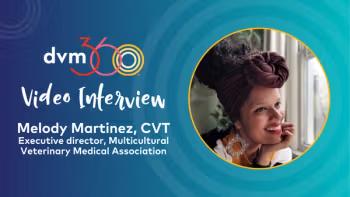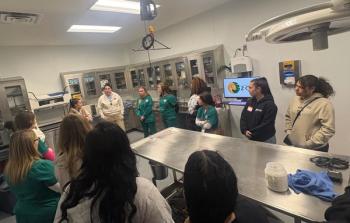
9 steps to effective staff meetings, implementing change
Follow-through after meetings is a frustrating issue in many practices.
Staff follow-through after team meetings is a frustrating issue in many practice environments.
One can have productive discussions in which everyone agrees on the issues, plans and commitment to improve, only to find that, one month later, nothing has changed.
Often it's the same with veterinarians who go to continuing-education meetings, get all fired up with new ideas, but never get around to implementing anything.
Such failures often result from the fact that so much in our lives is rote.
We can overcome this human failing, but it takes a constellation of skills and discipline — starting with making sure we have the right people on staff.
All it takes to torpedo effective follow-through is one "negaholic," one Godzilla personality or one sniper.
Such individuals are easily identifiable at staff meetings. They may be doodling or doing their nails. Their body language says they are not present. They aren't listening and generally exude a sense of "not me."
Once you change that atmosphere, making sure everyone on staff is motivated and committed, identifying issues to discuss is easy.
One way is to provide daily worksheets where problems are identified and noted, along with a flip chart where all are invited to jot down points to discuss at the next meeting.
Few people like criticism, no matter how tactfully it is presented, but without honest critiques little is likely to improve or change.
When practice leaders are able to accept criticism and act on it, staff members are more likely to accept constructive critiques of their work and improve.
The practice mission must be clear and understandable, and must be the guiding force behind all issues and challenges on the table.
Nine steps to help energize your practice
The next step to motivating staff members is listening to them and to the concerns of clients, remembering that people express themselves in different ways, some directly and some indirectly.
Then it's time to ask, "What are the options to solve this issue?"
When a consultant visits a practice, usually the only way he or she can identify hidden issues is to ask — starting with the staff.
Staff, clients and practice leaders all want the practice to succeed, but sometimes the practice leaders are surprised to learn that they are the problem, but are just too close to see the obvious.
Staff members may suffer in silence as issues go unidentified — or do get identified but never solved.
Give control of issues on the table to the staff, and they will be addressed.
The secret to getting staff on track to help the practice mission is to ask what is troubling them. Seek their input, then give them enough control to solve the issue.
But be sure to monitor the follow-through activities. When giving power to the staff, it is essential to keep track of their progress, nudge them, nurture them and help them accomplish what they set out to do. That might include simply releasing someone from floor duties for a few hours to work on these projects.
It is to be expected that some problems, though apparently solved, will resurface. Implementing change is a slippery, uphill task.
Persistence often is cited as a central element of success, and so it is with staff meetings and follow-through projects. We must persist daily, weekly, monthly and annually.
Another hint: Pick the battles carefully. Prioritize them. Some can be delegated or given a lower priority. That requires practice leaders to be somewhat selective, focusing on vital issues so as not to burn up the staff and damage morale.
Remember that staff members live every day with issues they find frustrating. Because they live with them, they will have good solutions.
Dr. Riegger, Dipl. ABVP, is the chief medical officer at Northwest Animal Clinic Hospital and Specialty Practice him. or fax (505) 898-0407,
Newsletter
From exam room tips to practice management insights, get trusted veterinary news delivered straight to your inbox—subscribe to dvm360.






